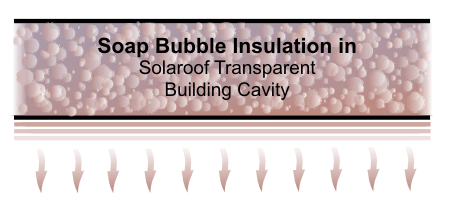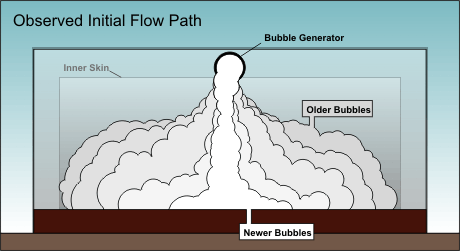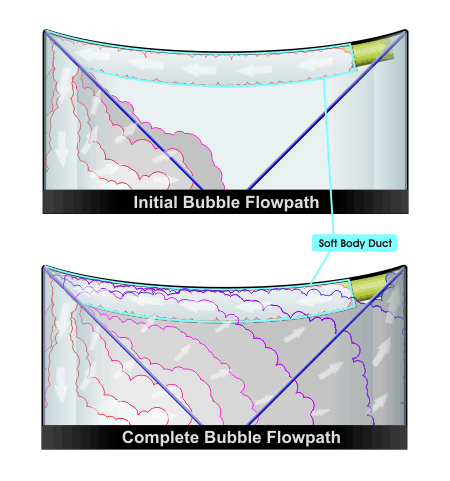 Bubble Regeneration Cycle
Bubble Regeneration Cycle
Replenishing the Solaroof cavity with bubbles that have gained thermal energy from the liquid thermal mass is the systems mechanism for slowly releasing collected solar thermal energy back into the building environment at night. Thus, replacing the greatest possible percentage of old bubbles in regeneration cycles is key to the efficient oporation of a Solaroof building. Filling both cavities will take approximately 3 minutes. Bubbles will last in the cavity for many hours but are replaced on average, once every hour.

As the bubbles get older they become almost transparent and appear to become very light. When new bubbles are introduced to old, the new heavier bubbles flow straight to the bottom and from here, grow out pushing the old bubbles up and out from below.
Bubble Flowpath
The bubble generators in the
bio-x tent configuration below are situated inside the cavity on the apex at the opposite end to the oval door. A transparent soft body duct carries the bubbles to the door-end-apex. From this open end of the duct the bubbles will fall to the bottom of the structure to one side of the door or the other. This is the point, in effect, where the bubbles begin there outward expansion. The last remaining air gap being the generator inlet. The entire cavity in this building has a smooth curved path so pushing old lighter bubble during regeneration cycles will be very effective.
